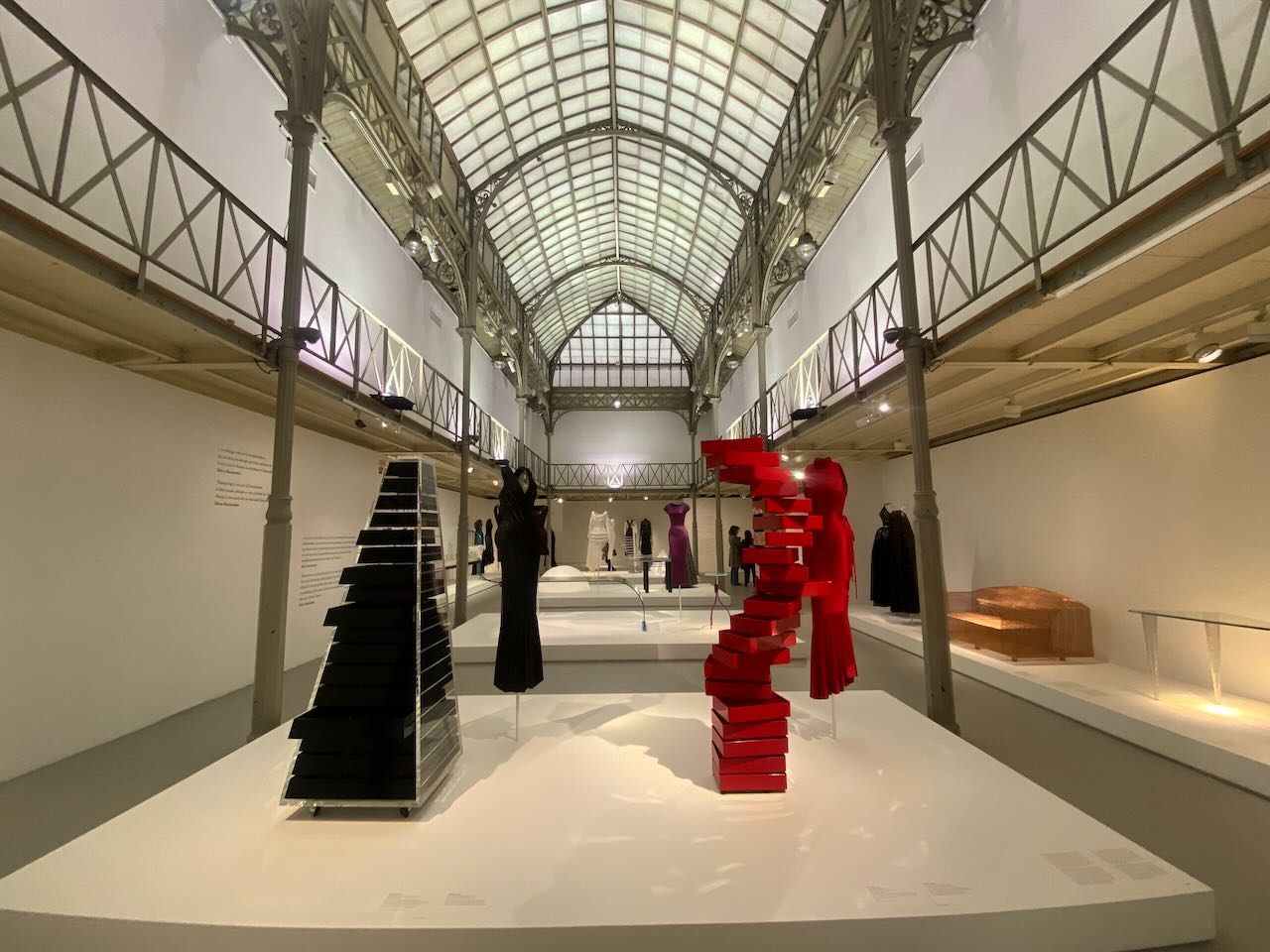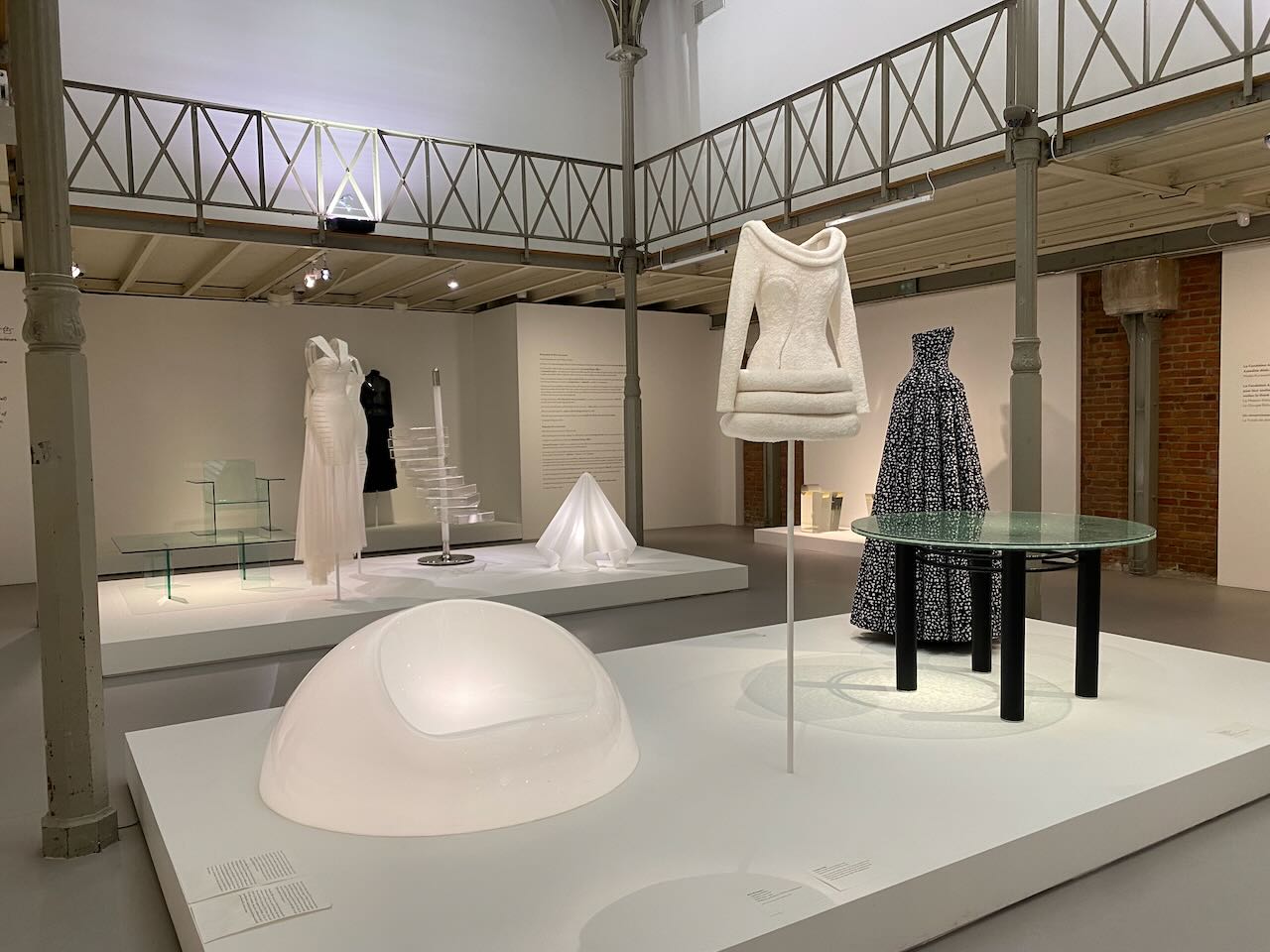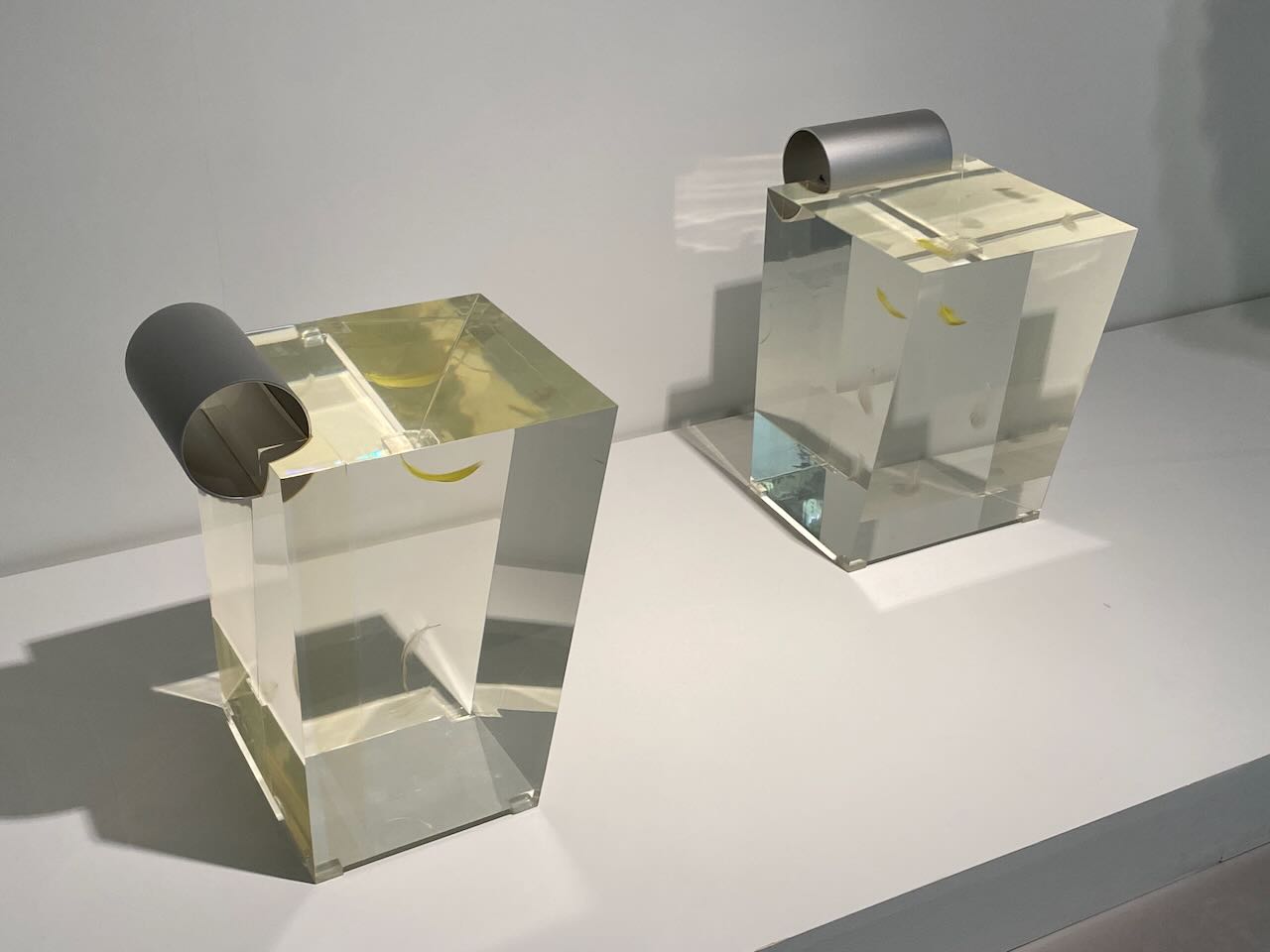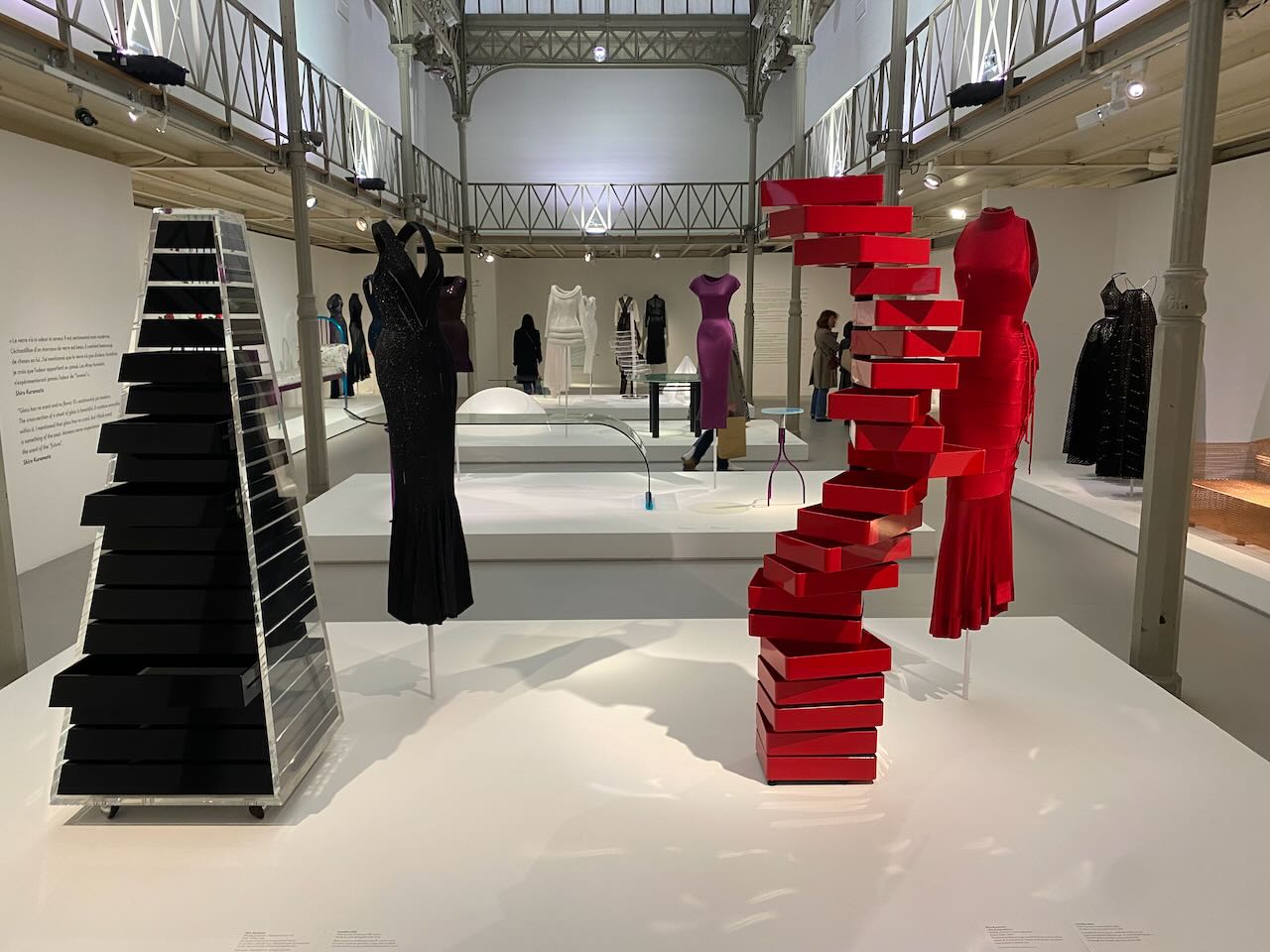Alaïa/Kuramata, "Lightness in Creation"

At a recent exhibition at the Fondation Alaïa, the sculptural furniture designs of Shiro Kuramata were displayed alongside Alaïa’s haute couture pieces. A few minutes walk from Hôtel de Ville, the late fashion designer’s space now holds a café restaurant and a bookstore at the entrance underneath a beautiful glass roof. Past the café, the exhibition space is flooded with light through its multilevel high ceilings of the orangerie-style structure similar to that of the café. In recent years, there has been a growing trend of fashion houses opening up as event spaces for various exhibitions, including, but not limited to, fashion.
Who is Alaïa?
Azzedine Alaïa (1935-2017) was born in Tunis before arriving in Paris in 1956. The website of Fondation Azzedine Alaïa gives an overview of the chronology of his life and career. His career carried a “vision of timeless beauty and the power of femininity,” a career that would stretch over 60 years. His hyper-focused attention to detail and seamlessness elevated him to the status of a master of couture. A legacy such as his continues in part due to his emphasis on not creating work just for the trends of a particular season of fashion. He wanted to create outside the constraints of fashion fads to create designs that could stand the test of time.
Although his path hadn’t always been in fashion, he always had an artistic streak. Initially, he claimed that “I wanted to do sculpture when I was at the School of Fine Arts. That’s where my interest in the curves of the body comes from.” He would eventually perfect his work with fabric on the curves of the female body rather than through the use of clay.

Shiro Kuramata
Alaïa had been a great admirer of the designer Shiro Kuramata (1934-1991). Born in Tokyo, Kuramata was greatly inspired by the history of Japanese decorative arts but with a modern twist. He was fascinated with the modern Japanese styles of structural simplicity, and incorporated this into his work streaked with the style of non-materialism, playing with gravity through the usage of unconventional materials and designs.
For Kuramata, this non-materialism led him to create non-traditional objects for daily life. For example, some of his most famed pieces are a couch made of metal mesh, a chair made of glass/acrylic, and a glowing chair that serves as both a seat and a lamp. He constantly designed with the principle of form following function and against what he perceived to be the constraints of gravity. Instead, he aimed to achieve that equilibrium through balancing light and dense objects together for an aesthetic balance. For Kuramata, the balance he searched for was almost spiritual in his pursuit of a contemplative atmosphere of material equilibrium. In essence, his "strongest wish [was] to feel free of all gravity, of all ties... to float”.

Alaïa became a collector of Kuramata’s pieces, amassing 25 pieces of the late designer's work. The famous steel mesh chair titled How High is the Moon (1986) entered his collection and was on display in the exhibit. The two of them carried a profound relationship to sculptural design, and this is clear in the presentation of the exhibit, as it placed a Kuramata piece alongside an Alaïa creation. They celebrate a similar vision even though they worked with entirely different mediums. About 20 pieces by Kuramata and about 20 by Alaïa are present.

There has been a growing connection between fashion and other art forms in recent years, and this exhibit is a perfect example of that interplay. Alaïa is still known for his curve accentuating tightly fitted designs with delicate tailoring and inventive use of leather and knit. Kuramata is remembered for his interplay between form and function and the balance he presented from that tension. Their shared passion for pushing the boundaries of their respective industries has kept their legacies alive both in their native countries and around the world.
Alaïa’s visionary style of tailoring, use of transparency and color scheme has left its mark in fashion even after his passing. His influence is still present in contemporary fashion designers, and after his passing in 2017, his brand has continued on in the hands of a new creative director—aided by the extensive archive Alaïa left behind.
His studio, where he would work through the night on design,s remains fully intact and untouched, serving as a time capsule into the past. Through a window on the upper level of the exhibition, you can view the messiness of patterns and fabric samples on tables and clothing racks. On a mood board in the back, he kept pictures of those he admired, including the Egyptian singer Umm Kulthum and his friend Naomi Campbell. He was successful in his endeavor for his work to be timeless. His spirit of creativity lives on–both in his preserved studio and in exhibitions such as this one, where his visions can continue to inspire.






